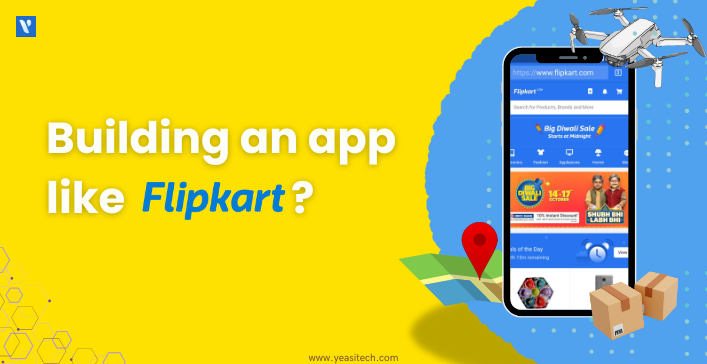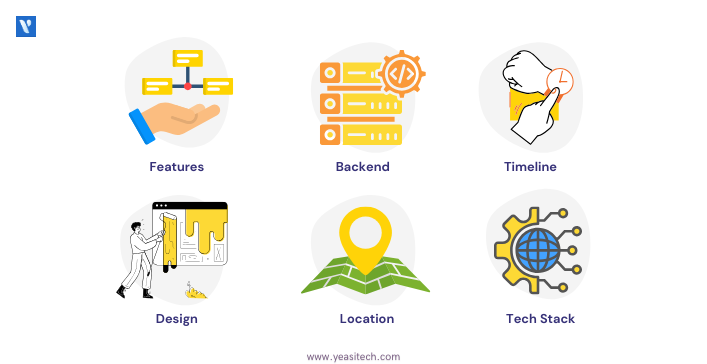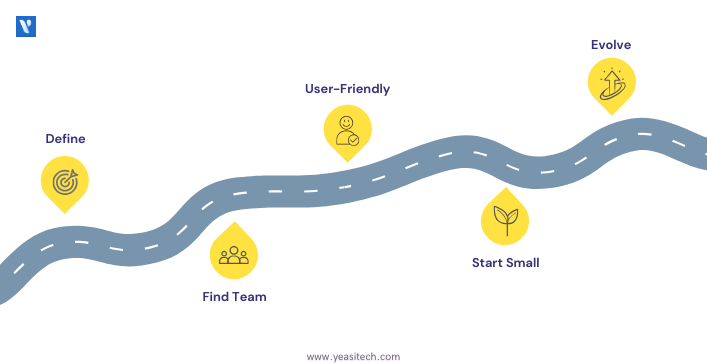How Much Does It Cost to Build an App Like Flipkart in 2025?

You’ve probably been shopping online for years.
You’ve seen apps like Flipkart, Amazon, and Myntra turn into digital giants.
And now, you’re thinking:
“I’ve got a plan. For my own company, I want to create an app like Flipkart. Yet… I don’t know how it works or how much it costs.”
If that’s you, welcome!
This blog is made just for you. You don’t need to know coding. You don’t need to be from a tech background. All you need is curiosity and vision.
Let’s demystify the process together.
Before we talk about cost, let’s quickly understand what an “App Like Flipkart” actually is.
Think about Flipkart — what do you usually do on it?
That’s it!
Your app will do the same. And it’s built for three types of users:
| Who Uses It? | What They Do |
|---|---|
| Shoppers | Browse, add to cart, buy products |
| Admins | Manage the website, products, orders, and customers |
| Sellers (optional) | Browse, add to cart, and buy products |
Note: You don’t need everything Flipkart has from Day 1. You can start small and grow as your business grows.
India’s online shopping industry is growing faster than ever:
Fun Fact: Flipkart delivers over 8 million packages per month.
That’s why building your own app like Flipkart, even on a smaller scale, is not just possible—it’s smart.
Flipkart isn’t just a shopping app. It’s a system — a smart, seamless experience that keeps people browsing, buying, and returning.
Here’s why it’s such a powerful model:
You might not want to build the next Flipkart… but what if you could create your own niche version — focused on your audience, your brand, your products?
It’s 100% possible.
At Yeasitech, we’ve helped brands like Origin Workwear and WorkWell build their own “mini-Flipkarts.”
Custom dashboards, product flows, payment systems — without breaking the bank.

Here’s where things get real. The cost of building your app depends on a few key things — let’s break it down in everyday language:
Every button, page, or action in your app, like searching for products, adding to a cart, applying a coupon, is a “feature.”
More features = More time to build = Higher cost.
Example:
A simple site that just lets people browse and buy products will cost much less than one with:
💡 Tip: Don’t try to build everything at once. Start with a few essential features. You can always add more later.
Your app’s design is what users first see and feel.
Do you want something basic that “just works”? Or a slick, modern interface that feels like Flipkart or Amazon?
| Design Type | Cost |
|---|---|
| Simple and functional | Lower cost |
| Premium and branded | Higher cost |
Modern designs help build trust, especially for new customers. But you can always upgrade your design after launch.
The backend is like the engine of a car. You don’t see it, but it powers everything. If your app needs to:
It requires a robust backend, which is more expensive to develop and test.
Here’s a fun fact:
Developers in India charge 50%–70% less than those in the US or UK — for the same quality work.
Global startups and Fortune 500 companies build their tech in India because of this. Hiring an experienced Indian team (like Yeasitech) gives you world-class quality at startup-friendly prices.
Time = Money.
If you want your app ready in 3 weeks, you’ll need a larger team working overtime. If you’re flexible with 6–8 weeks, it can be done more efficiently and affordably.
Some development tools are free, while others need a paid license or subscription. Picking the right technology early on can save you money now and prevent extra expenses later.
At Yeasitech, we always suggest tools that are secure, scalable, and budget-friendly for startups.
Let’s say you’re just starting your online business. You’re not Amazon. You don’t have millions of products. You simply want a store that is both functional and visually appealing, where people can shop.
Here are the must-have features to build your MVP (Minimum Viable Product) — your very first working version of the app:
| Feature | Why You Need It |
|---|---|
| User login/signup | So customers can create accounts, track orders, and manage their details |
| Product pages | Display each product with images, price, and description |
| Search & filters | Help users find what they want quickly (for example, by price, brand, color) |
| Shopping cart | So users can add items they like and review them before buying |
| Checkout & payment | Accept payments using UPI, debit cards, wallets, or net banking |
| Order tracking | Let customers see the status of their delivery |
| Admin panel | You can add products, change prices, check orders, and manage your store |
| Responsive design | Help users find what they want quickly (e.g., by price, brand, color) |
This simple setup is enough to start your online business and begin selling. Later, you can add more features like discount coupons, bulk product uploads, wishlists, delivery tracking, and seller accounts whenever you need.
Now, the part everyone wants to know: “How much does it actually cost to build an app like Flipkart?” Here’s a transparent cost breakdown based on a standard MVP (first version):
| Feature | What It Does | Cost Range (INR) |
|---|---|---|
| Login & Signup | Users create an account | ₹5,000 – ₹10,000 |
| Product Listings | Add & show products with price, images, etc. | ₹8,000 – ₹15,000 |
| Search & Filters | Helps users find items faster | ₹10,000 – ₹20,000 |
| Cart & Checkout | Users add items and place orders | ₹10,000 – ₹30,000 |
| Payment Gateway | Accepts payments (UPI, card, wallets) | ₹12,000 – ₹50,000 |
| Order Tracking | Shows delivery status | ₹10,000 – ₹40,000 |
| Admin Dashboard | You manage users, orders, products | ₹15,000 – ₹60,000 |
| Responsive Design | Looks great on mobile and tablets too | ₹8,000 – ₹30,000 |
This is the typical range for building a starter version of an app like Flipkart. It’s sufficient for starting, operating, and growing your user base.
| Version | Timeline |
|---|---|
| Basic MVP | 4–6 weeks |
| Full-featured App | 8–12 weeks (or more) |
Tip: You should always begin with an MVP. Use criticism to get better. Don’t waste money or effort on things that customers might not even use.
Building the app like Flipkart is one part. Running it is the other. Here’s what you’ll need:
| Ongoing Cost | What It’s For | Price (Approx.) |
|---|---|---|
| Hosting & Server | Keeps your website active at all times. | ₹2,000 – ₹10,000/month |
| Domain + SSL | Your web address & security lock | ₹2,000 – ₹5,000/year |
| Maintenance | Updates, bug fixes, support | ₹10,000 – ₹30,000/month |
| Marketing (optional) | Ads, SEO, influencers | ₹10,000+/month |
You can control these based on your budget. Start lean, then invest more as your business grows.
Let’s make this real with a success story.
One of our clients, Origin Workwear, wanted to move from a basic online store to a custom e-commerce web app with advanced features for industrial buyers.
We built:
Delivered in under 8 weeks with a budget under $25,000.
“At Yeasitech, we’ve helped businesses like Origin Workwear build scalable e-commerce platforms. We know what it takes—cost-wise and tech-wise. Read the full case study here.”

You don’t need to know coding or any technical stuff to create an app like Flipkart. Even if you’ve never worked with technology before, you can turn your idea into a real app by following a few simple steps.
Let’s start with the fundamentals:
You don’t have to build it yourself. Let experts help you.
A good-looking app isn’t enough. It must work well, too.
You don’t need all the features on Day 1.
Flipkart didn’t have everything at once—it grew step by step.
Your ideas matter, even if you’re not technical.
Bonus Tip: At Yeasitech, we’ve helped many business owners like you, people with great ideas but no tech background, launch an app like Flipkart that really works.
Let’s wrap it up.
You don’t need to be technical. You don’t need millions in funding. You just need the right partner and a solid plan.

The cost to build a basic Flipkart-like web app in India starts from ₹40,000 and can go up to ₹2.5 lakhs for an MVP (Minimum Viable Product). Costs increase based on features, design, and technology used.
Yes, absolutely. Many business owners start with just an idea. You’ll need a reliable development partner like Yeasitech who can turn your vision into a working app, without overwhelming you with tech jargon.
A basic version of an eCommerce app can take 4–6 weeks. A full-featured app (with seller dashboards, advanced filters, etc.) may take 8–12 weeks or more, depending on complexity and revisions.
Yes, that’s called launching an MVP (Minimum Viable Product). You start with essential features like product listings, cart, payments, and add more later as your business grows. It saves time and money upfront.
If you need full control and scalability, a custom-built app (like the ones Yeasitech develops) is a better option. Shopify is faster to start, but limited in customization, and may become expensive as you scale.
YeasiTech is a trusted IT service partner with 8+ years of experience, empowering 250+ businesses with scalable web, mobile and AI solutions.
Explore related topics to broaden your understanding and gain actionable insights that can transform your strategies.